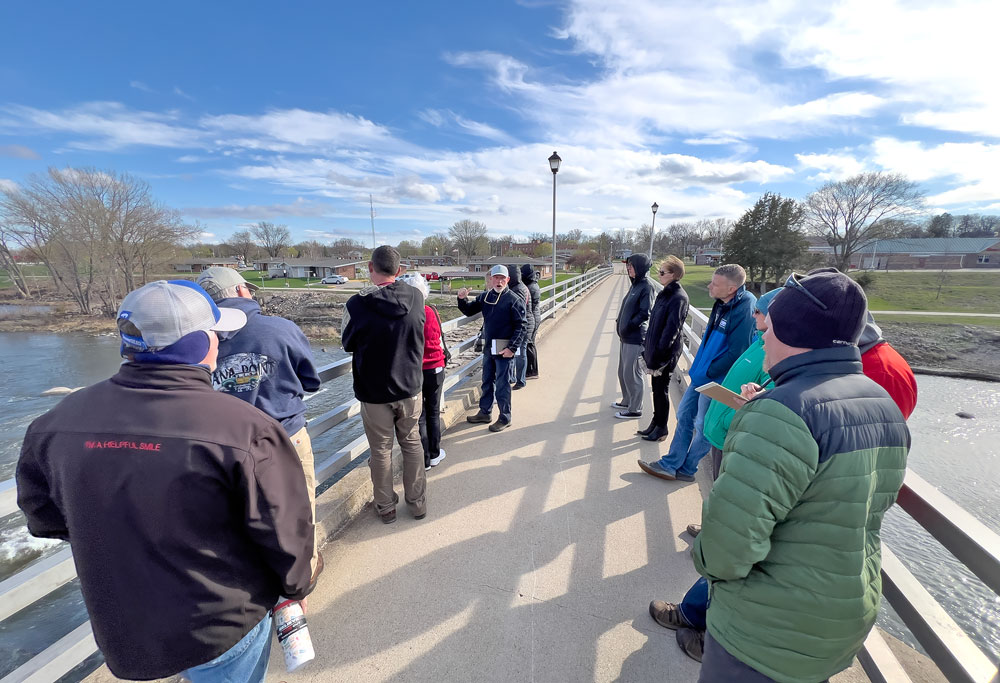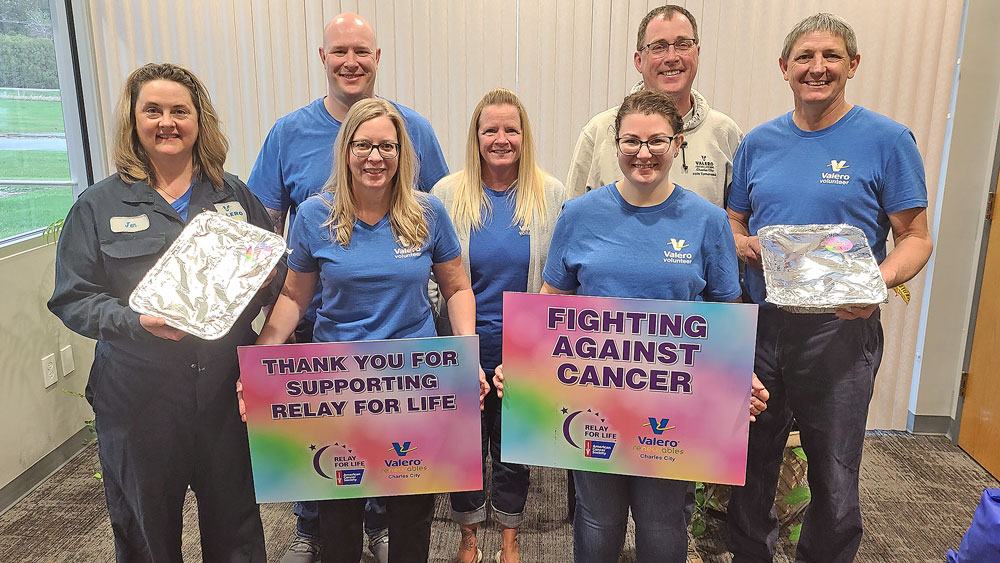Charles City school district sells historic part of old middle school

By Bob Steenson, bsteenson@charlescitypress.com
It’s official. The Charles City Board of Education has sold the front, historic part of the building at 500 N. Grand that once housed the middle school.
The board sold the 1932 part of the building to developer Shawn Foutch for a dollar, with the stipulation that he invest about $4 million into the building to turn it into 35 to 40 market-rate apartments.
Foutch, who was at the meeting, said the actual development price would be closer to $5 million, and while some of that would come from Foutch’s development company, Foutch Properties, much of it is expected to come from local, state and federal tax incentives. (See related Charles City Council story on this page.)
The board held a public hearing before taking action, and the board read two letters it had received, both from persons asking that the board delay a decision to address concerns they had.
Attorney and developer Charlie Thomson was not at the meeting, but his letter said, in part, “It appears that there is no provision requiring the developer to maintain the architectural integrity of 1932 building in general, or of the auditorium specifically. There is also no provision that I could see obligating the developer making the auditorium available for general public use.”
Thomson had previously had an option to purchase the property, also with the intent of developing residential housing, but the school board declared that option expired in December 2017 when no action had been taken.
Dennis White, who identified himself as a longtime citizen born in Charles City and a design construction professional, had essentially the same concern, saying he was “not comfortable with the wording of the resolution as it exists, without adding clear stated protection for the architectural integrity of the building and its elements, and especially one that speaks clearly of continued inclusive integrity of the iconic auditorium as it is.”
Foutch addressed the letters’ concerns.
“As I heard the comments you just read, I was looking quickly through the document to see if we explicitly said that.” he said. “I’m not sure if we explicitly said that, but it very clearly is our intent, and if at the board’s pleasure you want to make any minor revisions to the document to reflect that, we’re absolutely willing to do so, because that is entirely our intent.
“It’s our expectation we’ll develop somewhere up to around 40 apartments that will range from studios up through two-bedroom and maybe there might be the odd three-bedroom apartment in there somewhere, depending entirely on how we can fit it within the historic confines of the building,” he said.
“As part of our process, since it’s been brought up, the auditorium is an incredibly important part of the architectural and historic fabric of the property, so it is our intent to leave the auditorium intact, to make repairs and improvements as necessary to stabilize it and to make it available for continued use, but not to materially change it,” Foutch said.
He said that as he has developed other old school buildings into apartments he has ended up owning a lot of auditoriums.
“They don’t do us or anybody else any good if they just sit empty, so it is always our intent to make them available as an amenity to the residents who lives there and to make them available as a resource to the community, either to the school or to the city or to the public,” he said.
“Not necessarily free of charge, since we are a company that has to make a profit, we need to at least recoup our costs, but definitely make that space available to the community. That’s something we’re willing to commit to at any level that we need to,” Foutch said.
He said that whether the stipulations about preserving the historic nature of the building are in the sales agreement or not, that is required to qualify for the state and federal tax incentives that are vital to the project.
“Our intent is really clear, and if we don’t follow the rules we don’t get the funding and without the funding the project doesn’t work, so we are absolutely committed to it,” he said.
“I reiterate it’s a beautiful building. It has great architectural integrity, so I don’t fault either of the commenters for bringing that up, wanting to make it an issue, but it’s our intent in every way to comply with the requirements for a historical renovation as we pull this thing together,” Foutch said.
In the end, board members said they were comfortable with the resolution and sales agreement as written.
Board member Scott Dight said, “Based upon our conversations with Mr. Foutch in the last year and the projects his company has done over the years, and reviewing their work, I am fine with leaving the agreement as it is.
“I have complete faith and confidence in him and his teams that they will continue doing and moving that building forward in a manner in which we will all be pleased and proud of in the future,” Dight said.
The board passed the resolution for the sale 5-0.
The board also addressed a couple of other matters regarding the sale of the 1932 portion of the building.
Foutch said he was willing to let the school district use parts of the building until he begins construction, probably in the spring of 2021. In fact, he said, he preferred that the district continue to use parts of the building.
“Once these buildings go dormant they begin to deteriorate quickly, so having you in the building is incredibly important,” he said.
Foutch said he was also happy to let Floyd County use part of the building to relocate courtrooms or other offices while the law enforcement center and courthouse update projects are underway.
He said he wouldn’t be looking for anything more than that the groups using the building pay for utilities and their needed basis maintenance.
“If the board wants to enter into any sort of formalized agreement we can certainly do it, but I would clarify that we’re not looking for any money from you,” he said.
Superintendent Mike Fisher said the school district has been in regular communication with Foutch regarding any plans for other groups to use parts of the building he is purchasing, or the 1970s addition that the school district will retain ownership of.
“Anytime we’ve talked about 1970s development we’ve immediately been on the phone or emailed with Shawn just to get his input,” Fisher said. “It very much is a two-way conversation to make sure everything is complementary.
“We’ve talked about TLC moving in. We’ve been both excited because we really feel that opens up the demographic of the market rate housing. It gets to a broader customer base.
“We really feel that’s a win-win for the community because you’re going to have life in the facility prior to its rebirth,” Fisher said.
The fate of the middle school has been the center of some community controversy since 2012, when the school district began looking at options for the building. Sentiment ranged from remodeling the building so that it could continue to be used as classrooms, to tearing it down to build condos or other residential property.
The controversy was the topic of heated public discussions, letters to the editor, and even played a large role in a school board election.
In the end, the district decided to build the new middle school building near the high school, and that opened in August 2016. Since then the school has continued to regularly use the North Grand Auditorium throughout the years and the district also has administrative offices in the historic part of the building.







Social Share